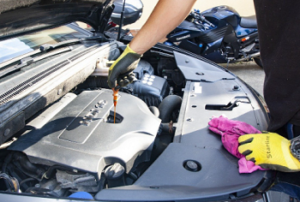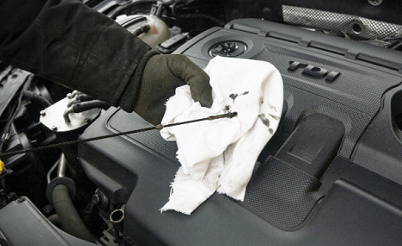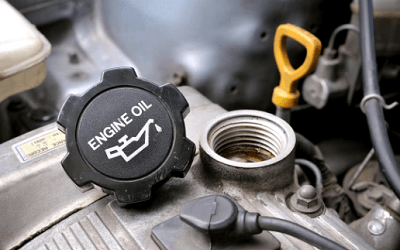recommended to add oil run the car when adding oil. Adding oil to a car does not require the engine to be running.
Adding oil to your car is an essential part of regular vehicle maintenance. It helps to keep the engine properly lubricated, ensuring smooth operation and preventing damage. However, many people are unsure whether they should add oil with the engine running or not.
The answer is simple: you do not need to have the car running when adding oil. In fact, it is actually recommended to turn off the engine before adding oil.
This allows the oil to settle in the oil pan and provides a more accurate measurement when checking the oil level. It also reduces the risk of accidental injury from moving parts. So next time you need to add oil to your car, remember that it should be done with the engine off.
Reasons Why Cars Need Regular Oil Changes
Reasons Why Cars Need Regular Oil Changes
Regular oil changes are essential for maintaining the longevity and performance of your vehicle. Here are two key reasons why cars require consistent oil changes:
| Engine Lubrication and Heat Reduction | Removal of Contaminants and Carbon Deposits |
| Ongoing engine lubrication is crucial as it helps reduce friction and heat produced from moving parts. Fresh oil ensures that all components are properly lubricated, preventing excessive wear and tear. | Over time, oil can accumulate contaminants and carbon deposits that diminish its effectiveness. Regular oil changes help remove these impurities, promoting a cleaner and healthier engine. |
By adhering to a routine oil change schedule, you can maintain optimal engine performance and enhance its durability. Avoiding unnecessary engine damage and costly repairs.
Should Car Be Running When Adding Oil? Experts Reveal The Surprising Answer
Many people have different opinions on whether a car should be running when adding oil. However, according to experts, it is not necessary to have the car running while adding oil.
This common misconception stems from the belief that the engine needs to be running to circulate the oil properly. In reality, the oil pump is designed to circulate oil even when the engine is not running.
Adding oil with the engine off ensures that the oil settles in the oil pan and allows for a more accurate measurement of oil level.

Starting the engine immediately after adding oil can cause oil pressure spikes and potentially damage the engine. It is recommended to consult the car’s owner manual for specific instructions on adding oil and to always use the correct oil grade for your vehicle.
There are several misconceptions regarding adding oil to a car. One common myth is that the engine should be running to properly distribute the oil. As mentioned earlier, this is not necessary as the oil pump can still circulate oil when the engine is off.
Another misconception is that adding more oil than recommended is better for the engine. In reality, overfilling the oil can cause foaming, which reduces its lubricating properties and can lead to engine damage.
Some people believe that adding oil is only necessary when the engine oil level is low. However, regular oil checks and top-ups are crucial for maintaining optimal engine performance and longevity.
The general consensus among experts is that the car does not have to be running when adding oil. Automotive engineers and mechanics recommend adding oil with the engine off to obtain an accurate oil level measurement.
This allows the oil to settle in the oil pan and ensures proper lubrication when the engine is started again. Adding oil with the engine running can increase the risk of accidents and injuries due to moving parts, hot surfaces, and rotating belts.
It is best to follow the advice of experts and refer to the car’s owner manual for specific instructions on adding oil.
Benefits Of Adding Oil With The Engine Running
Adding oil to a running car engine has several benefits. First and foremost, it allows for proper circulation of oil throughout the engine. When the engine is running, the oil pump is actively working, ensuring that oil is distributed to all the necessary parts of the engine.
This leads to efficient lubrication and helps prevent excessive wear and tear. Another advantage of adding oil with the engine running is the reduction in air pockets and foaming. Air pockets can cause a lack of lubrication in certain areas, leading to potential damage.
Foaming, on the other hand, decreases the oil’s ability to properly lubricate the engine. By adding oil while the engine is running, you minimize the risk of these issues occurring, ultimately improving the overall performance and longevity of your car engine.
Risks And Considerations When Adding Oil With The Engine Running
Adding oil to your car is an essential maintenance task, but it’s important to consider the risks and safety hazards involved. One potential injury that can occur is the risk of burns from hot components of the engine.
When the engine is running, these components can reach high temperatures, increasing the likelihood of accidental contact and resulting in burns. Moreover, the moving parts of the engine can pose a risk of injury if not handled properly.
There is also a risk of overfilling the engine oil if you add oil while the engine is running. Overfilling the oil can lead to various issues, such as reduced engine performance, increased oil consumption, and even engine damage.
It’s crucial to follow the manufacturer’s instructions for adding oil and ensure the engine is off and cooled down before starting the process to mitigate these risks.
Alternative Methods For Adding Oil
In the process of adding oil to your car, there are alternative methods that can be considered. One such method is adding oil with the engine off and cool.
This can be done using a funnel or an oil extractor. Both of these tools aid in the efficient and smooth addition of oil. When using a funnel, it helps to ensure that the oil is poured accurately and without any spillage.

On the other hand, an oil extractor extracts the oil directly from the engine through a tube. This method is particularly useful when the oil filter needs to be replaced or if there is limited access to the oil pan. By utilizing these alternative methods, the process of adding oil to your car can be made easier and more effective.
Additional Tips For Proper Oil Maintenance
Checking the oil level regularly is an important part of proper oil maintenance for your car. It is recommended to do this at least once a month or before long trips. To check the oil level, park your car on level ground and wait for the engine to cool down.
Locate the dipstick, pull it out, and wipe it clean with a cloth. Then, reinsert the dipstick fully and pull it out again to get an accurate reading. The oil level should be between the minimum and maximum markers on the dipstick.
Choosing the right type of oil for your car is also crucial. Consult your car’s owner manual to determine the correct viscosity and oil type recommended by the manufacturer.
Using the wrong oil can lead to engine damage and reduced performance. It is advisable to stick with reputable brands and consider synthetic oils for better protection and longevity.
Frequently Asked Questions For Should Car Be Running When Adding Oil
Should I Keep My Car Running When Adding Oil?
No, it is not necessary to keep your car running when adding oil. In fact, it is recommended to turn off the engine and let it cool down before adding oil to avoid any accidents or injuries. Make sure to check the oil level regularly and add oil only when the engine is off.
Can I Add Oil While The Car Is Hot?
No, it is not recommended to add oil while the car is hot. Allow the engine to cool down for at least 10 minutes before adding oil to avoid the risk of burns or accidents. Adding oil while the engine is still hot can lead to inaccurate oil level readings and potential damage to the engine.
How Often Should I Check My Car’s Oil Level?
It is recommended to check your car’s oil level at least once a month or before long trips. Regularly monitoring the oil level helps ensure optimal engine performance and prevents costly engine damage. If you notice a significant decrease in oil level between checks, it is advisable to have your car inspected by a professional mechanic.
Conclusion
It is recommended to turn off your car when adding oil to ensure accurate readings and prevent accidents. Running the engine can make it difficult to determine the correct oil level and can also increase the risk of burns or other mishaps.
By following this practice, you can ensure the longevity of your engine and maintain optimal performance. So, it is better to play it safe and turn off your car before adding oil.


Leave a Reply